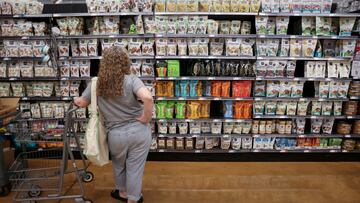Retirees can expect a Social Security COLA increase of around 10%, the largest increase since 1981
Details of the annual boost to Social Security benefits will be released next month, with SSA recipients expected to get a huge increase on payments.


Last year the Social Security Administration (SSA) announced a massive 5.9% cost-of-living adjustment (COLA) for all benefits payments in 2022.
This represented a boost of $93 for the average recipient and was the most significant increase offered by the SSA in nearly 40 years. That was in response to the sky-high rate of inflation recorded in the second half of 2021, but that trend has continued into this year and experts are expected another bumper increase.
An analysis from MarketWatch suggests that the COLA increase for 2023 could be close to 10%, if inflation continues to rise. The COLA increase is calculated using the Consumer Price Index for Urban Wage Earners and Clerical Workers (CPI-W) and is based only on the third quarter of the year.
Data for August and September has not yet been released, but the year-on-year inflation figure for July was 8.5%. If inflation were to rise by 0.6% in both August and September then MarketWatch anticipates a 2023 COLA increase of 9.5%.
How big a Social Security COLA can retirees expect in 2023? https://t.co/WQpZaaYBmf
— MW Retirement News (@MKTWRetirement) August 30, 2022
However this is the top estimate for COLA 2023 and the final figure may be slightly lower. If inflation were to remain at its July level for August and September, then the COLA increase would be 8.9%. Even this would be a huge change in Social Security benefits and would represent the sharpest increase since 1981.
What to expect from the August inflation report
The inflation report for August is set to be released on Tuesday, 13 September and the figures will have a huge bearing on the size of Social Security payments next year. The year-on-year inflation rate for June was 9.1% but that fell to 8.6% in July, hinting that the surge of price rises may be beginning to ease.
After the August jobs report showed a gain of 315,000 jobs, President Biden said “the great American job machine continues its comeback” and “we’re seeing some signs that inflation may be, may be — I’m not overpromising — may be beginning to ease.” https://t.co/veXNiqUHLQ pic.twitter.com/Mv7Wg0bvFT
— The New York Times (@nytimes) September 2, 2022
Earlier this month a survey from the New York Federal Reserve showed that Americans now believe that inflation will cool, a significant turning point in the economic recovery.
Related stories
The monthly Survey of Consumer Expectations showed that respondents anticipate that inflation will run at 6.2% over the next year. The shift in consumers’ expectations is a critical one in a volatile economy because the belief that prices will rise often pushes up inflation further.
The fall in gasoline prices from their mid-June peak has undoubtedly been a key contributing factor in the downward trend. The price of motor fuel has a direct effect on the household finances of consumers and is also factored in to the transport costs associated with the vast majority of goods.

